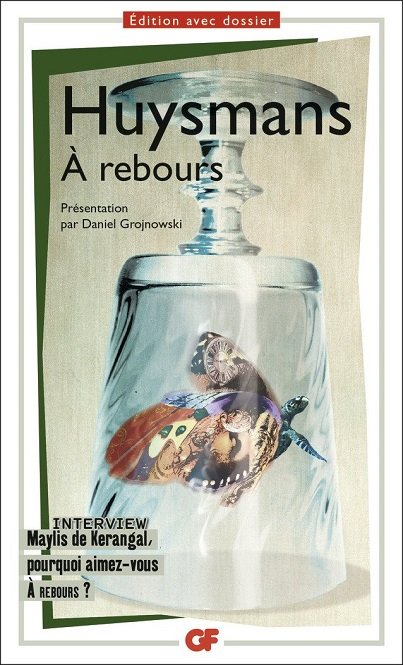Some thoughts about the great book of Joris-Karl Huysmans "A Rebours"
The novel by Joris-Karl Huysmans "A Rebours" appeared in 1884. An essential characteristic of this narrative work is its almost total lack of precision. In fact, Huysmans conceives a provocative novel to offer to the sophisticated senses of the sultry aesthetists living in Paris' fashionable literary cafes a rich feast, a literary collection of paintings, sounds and smells. The provocation of the pope of the decadence is proclaimed by the subtitle of the novel, "Roman without intrigue." In the preface, prepared for the second edition of the novel, 1908, Huysmans declares that this insubordination is deliberately sought by him: "I decided to remove the traditional intrigue, even the love passion and the woman, to focus the brush of light on only one person, to create something new at all costs." Indeed, in the construction of the plot of this typical decadent work, little external events were invested, which average French reader of the 80s of the nineteenth century could be intrigued and fascinated.
The attention of the author of the "A Rebours" is entirely focused on the spiritual evolution of the main character Jean Floresa, duke Des Essen, an eccentric aesthete, a peculiar anti-hero. The character of Des Essen is built by combining the features and habits of two real life prototypes - Count Robert de Montesquiou . The process of emergence and the disappearance of the sympathies and antipathies in the desperate aesthetic Des Essen, which he acquires in life and in communicating with the various arts, is traced with impressive details and astonishingly rich nuances from the Pope of the French decadence. In fact, the sympathies and antipathies of the anti-germ of the novel "A Rebours" are echoes of the aesthetic evolution through which its creator moves into real life. It is precisely with this work that Huysmans announces to the literary elite of Paris that he definitively rejects his previous creative commitment as a novelist with the aesthetics of naturalism. In a preface to the second edition of the novel (1903) (3), he states that the "quest for an artificial existence," which is found in the central character of the novel, is in fact a consequence of his "gusts towards a new ideal." The novelist admits that in his real life he has gone from the "stage of dedication to Satan", during which his occult activities led him to the advantage in the life of sensual impulses, to the "stage of zealous devotion to the Catholic faith." Huysmans says that he has returned to God after being attracted to the painting by the bold experiments with the colors of the French Impressionist painters - Monet, Degas, Pizarro, Odilon Redon. Thus, the author of "A Rebours" aims to achieve a "spiritualistic naturalism" as a writer whose main features are highlighting the harsh truths of life, the use of rare terms and the "full language and radiating high nervous tension of realism"
The French historians of literature appreciated the novel "A Rebours" both as a radical turn and a triumph in Huysmans ' writing career, and as a work introducing a new narrative style into French literature. The early novels of the writer are written in a realistic style that has become popular in France thanks to Zola, who first introduces heroes and heroines from the poor neighborhoods and workers' quarters into his novels. As the author of "A Rebours" notes, this eminent contemporary conveys love in his novels outside the secular salons and aristocratic palaces and introduces it into the real world. Still, Huysmans does not conceal his dissatisfaction with the fact that the work of naturalist Zola primarily involves the development of dramatic love affairs and trivial adultery. In fact, the content of the novel "A Rebours" could be described as a skillfully arranged mosaic of several series of miniature surveys of the then interior architecture, of the fashionable passions of the art of jewelery, the masterpieces of classical and modern literature, the innovative experiments in painting and music that are arranged in a rough skeleton-like intrigue. Herzog Des Essen decided to leave Paris and live in a remote and secluded village (Fontene-de-Rose). He is overwhelmed by the fear that his health is seriously threatened by overcrowding in metropolis in the capital. He decides to arrange his new home in Fontaine as a sanctuary for relaxation and aesthetic pursuits. The bulk of the work is devoted to an in-depth review of the procession of beautification of the provincial refuge of Duke Essen. In the deliberately untried narrative, a captivating chapter (XIV) has been developed, in which the subjective judgments of Yusmans' anti-heroism on classical literature and on the works of his favorite contemporary authors have been developed with striking shades and exquisitely. In two other chapters of "A Rebours" are exposed the tastes of the precise esthete Des Essen, which he exhibits to the innovative pictorial tendencies in the painting and music of his transition epoch.

Great
very famous novel A Rebours the masterpieces of classical and modern literature, the innovative experiments in painting and music